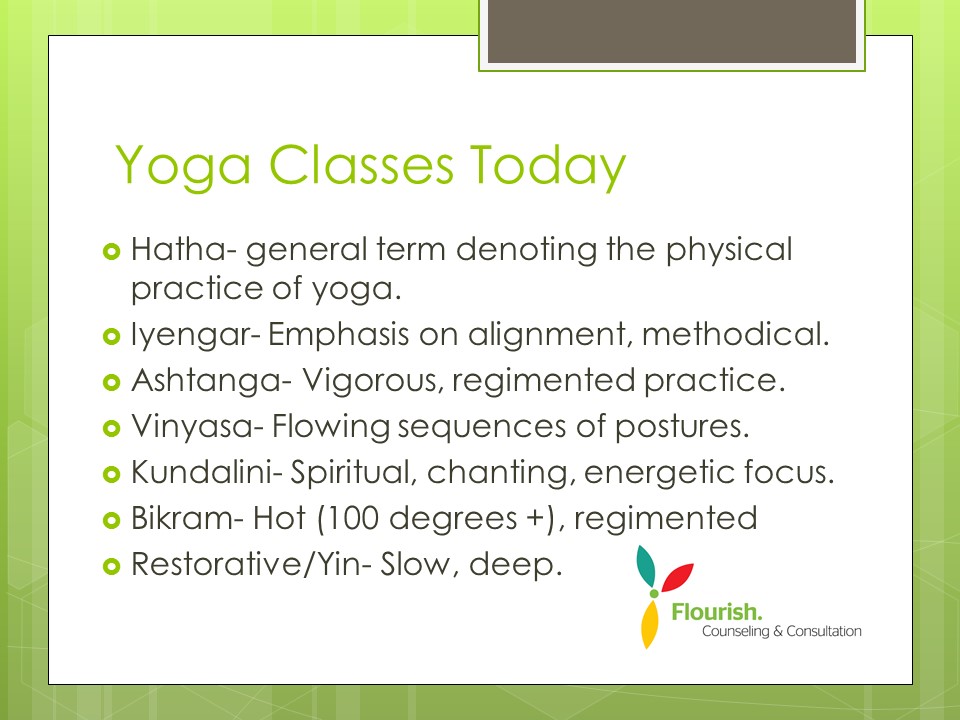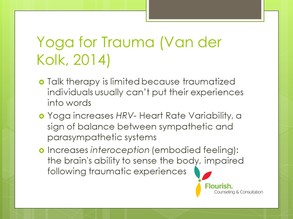|
Bright and early a few days ago, I had the fantastic opportunity to teach a workshop about yoga to counselors from across our state at the Texas Counseling Association annual conference in Dallas. It was a great time! I shared a presentation, then led the group through a yoga practice so they could experience it for themselves. We ended our morning circling up for discussion. In the session, we talked about the ancient roots and philosophy of yoga, the different types of yoga classes found in many communities today, and how specific approaches have been developed to use yoga for trauma recovery and mental health. You can learn more about all of these ideas in the complete Powerpoint presentation. Here are a few key slides that may be very helpful when considering starting a yoga practice. First, a description of some of the terms used to describe types of classes. Then some findings of researchers. There's a lot of data that points to the benefits of yoga. But yoga is not to be used without caution. Here's my advice for choosing the right yoga class:
What to know before you go:
Here's to finding the best yoga experience to reap the benefits of this ancient practice! Learn more about yoga therapy at Flourish.
Chris F.
12/10/2016 07:23:19 pm
Thanks for sharing this. It is worth mentioning that every other class description besides yours on the Remington sign has a gimmick (clever titles, dubious claims of effectiveness, pseudo-proverbs, alliteration, etc.) The most unassuming things in life often have the most value. Comments are closed.
|
AuthorKambria Kennedy-Dominguez, LPC-S |
Phone: 972.755.9120 | Fax: 214.723.5345
533 W. 12th Street Dallas, TX 75208
Privacy Policy Good Faith Estimate
©Flourish Counseling and Consultation PLLC 2024
533 W. 12th Street Dallas, TX 75208
Privacy Policy Good Faith Estimate
©Flourish Counseling and Consultation PLLC 2024




 RSS Feed
RSS Feed
